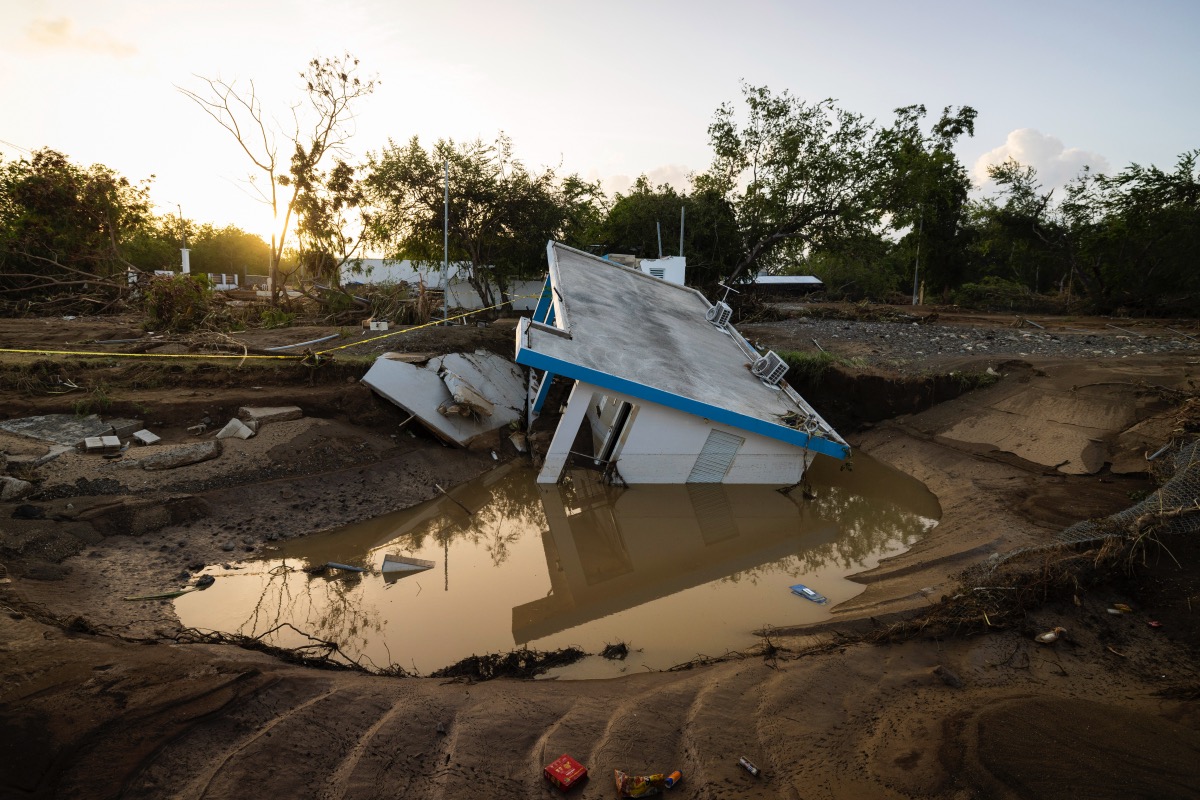

View of a house that was washed away by Hurricane Fiona at Villa Esperanza in Salinas, Puerto Rico, Wednesday, September 21, 2022. (AP Photo/Alejandro Granadillo)
By DÁNICA COTO, Associated Press
SAN JUAN, Puerto Rico (AP) — Preliminary evaluations show Hurricane Fiona damaged 50 percent of transmission lines and distribution feeders across Puerto Rico as hundreds of thousands remain without power or water service almost two weeks after the storm hit, officials said Thursday.
The announcement came as a major power plant in Puerto Rico was knocked offline and began to spew heavy black smoke in the latest setback to efforts to stabilize the U.S. territory’s power grid.
Gov. Pedro Pierluisi said crews were working swiftly to restore essential services, but stressed that he was not satisfied that more than 270,000 clients out of 1.47 million were without power and more than 100,000 clients out of 1.2 million without water service.
The situation has angered and exasperated many who already were affected by power outages blamed on Hurricane María, a Category 4 storm that razed the island’s power grid in September 2017. Hurricane Fiona slammed into Puerto Rico’s southwest region as a Category 1 storm on September 18.
“We are living in a state of eternal fragility,” said Puerto Rico Rep. Mariana Nogales.
LUMA Energy, a private company that operates transmission and distribution of power in Puerto Rico, has promised that electricity would be restored to 90 percent of clients by Friday in areas not severely affected by the storm. In hard-hit areas, officials have said they might restore power to 90 percent of clients by next Thursday.
“I’m demanding more,” Pierluisi said.
Officials have not said when the entire island might be energized.
The lack of power has led to dwindling diesel supplies and prompted U.S. Homeland Security Secretary Alejandro Mayorkas to announce Wednesday night that he would temporarily waive a federal law to allow for a British Petroleum ship to dock in Puerto Rico and unload 300,000 barrels of diesel.
The outage has forced businesses including grocery stores and gas stations to temporarily close and prevented hundreds of schools from opening. In addition, 16 government medical clinics and seven dialysis centers are still operating on generators.
In a policy brief released Thursday, the Puerto Rico-based think tank Center for a New Economy said Puerto Rico already was extremely vulnerable prior to Fiona because only 30 percent of permanent reconstruction work related to 2017’s Hurricane María had started.
“Basically, nothing had been done to strengthen the electric grid and other critical infrastructures or increase their resiliency,” the center said. “The damage caused by Hurricane Fiona will certainly add another layer of complexity on top of what was already a difficult and complicated effort.”


